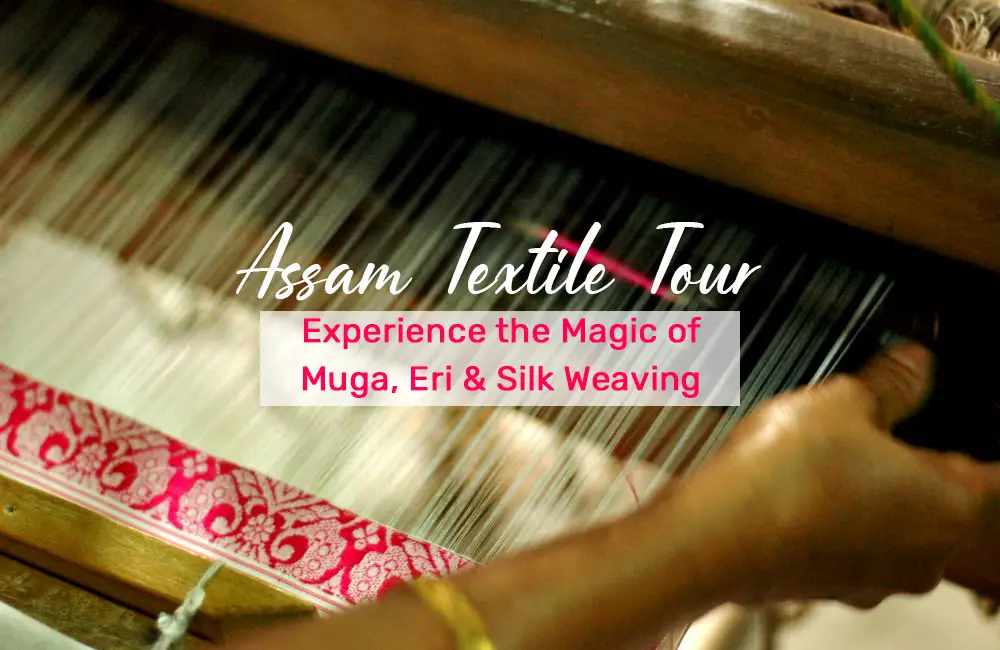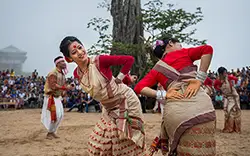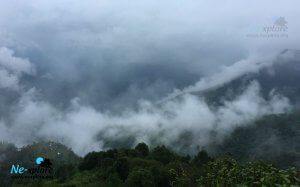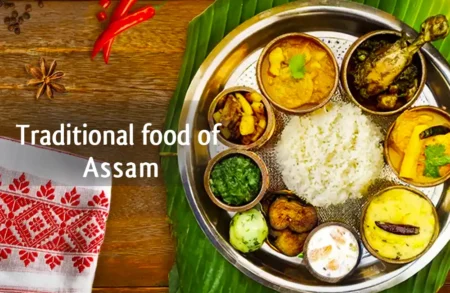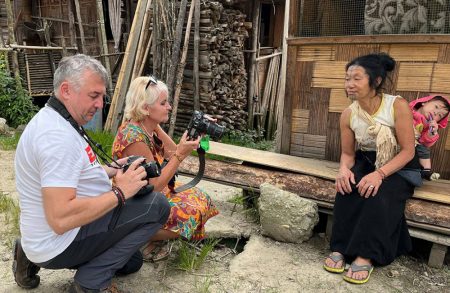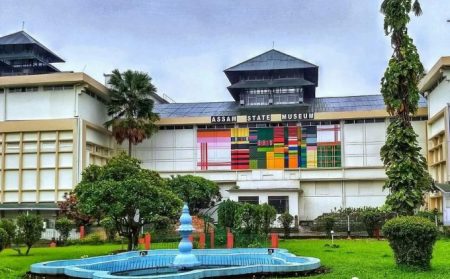I had dreamt of witnessing the age-old art of silk weaving in Assam—a land where silk isn’t just a fabric but a living tradition. Having heard so much about Assam’s exquisite handloom heritage, I was always fascinated by how this region remains the only place in the world that produces three distinct types of silk — Muga, Eri and Pat Silk. Each of these silks holds its own unique charm and story. I started my Assam textile tour in search of the villages where the weaving and rearing take place.
The Muga silk, often called the “Golden Silk of Assam,” is prized for its natural golden sheen that becomes glossier with every wash. The Eri silk, known as the “Silk of Peace,” is warm, soft, and cruelty-free—spun from open-ended cocoons without harming the silkworms. Then there’s Pat silk, pure white and lustrous, woven from fine mulberry threads, admired for its elegance and smooth texture.
When I finally planned my textile tour across Assam, it felt like fulfilling a long-awaited wish—to see firsthand how these legendary silk fabrics are made, to meet the artisans behind the looms, and to understand the deep cultural roots that keep this tradition alive. Little did I know that this journey would not only show me the process of silk making but also immerse me in the rhythm of Assam’s rural life, its artistry, and its timeless connection to nature.
Exploring the Silk Village of Sualkuchi
My first destination was Sualkuchi, a quaint village on the north bank of the Brahmaputra River. In Sualkuchi, the rhythmic clatter of looms echoes through the narrow lanes, though not as frequently as it once did. This charming village, known as the “Manchester of the East,” is the heart of Pat Silk (made from mulberry Silkworm) weaving in Assam. Visitors can step inside villagers’ homes to witness the intricate weaving process — from spinning fine silk threads, diffrent traditional weaving patterns to watching unfinished fabrics come to life on handlooms. It was humbling to see the hard work that goes into making a single piece. A visit to Bastra Udyan, the local textile museum, offers an insightful look into the history and evolution of Assam’s silk industry.
Sadly, this beautiful craft is slowly fading away, as younger generations show less interest in weaving compared to their parents and grandparents. The once-ubiquitous handlooms in every household are now becoming rare sights. To help preserve this age-old art, I urge every visitor to buy authentic textiles carrying the Sualkuchi trademark, ensuring that this proud heritage continues to thrive amid the flood of cheap, machine-made fabrics.
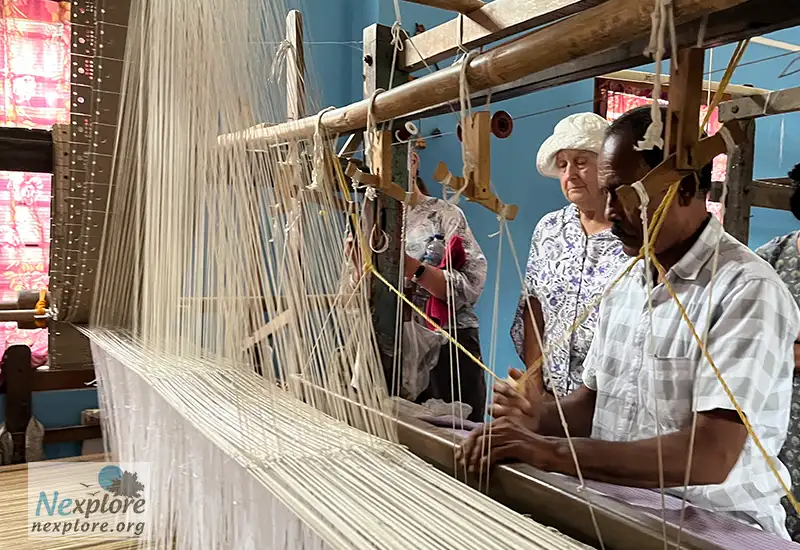
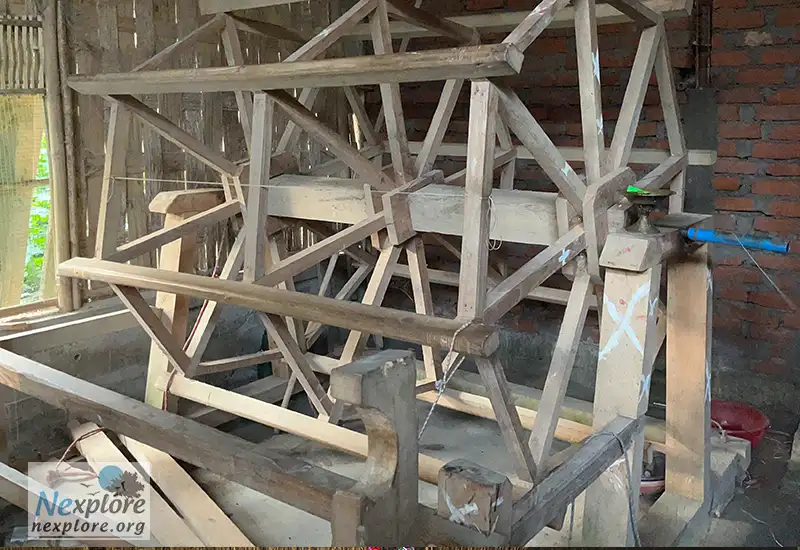
Journey to Majuli: The Island of Culture and Weaving Traditions
Next, I travelled to Majuli, the world’s largest river island, known for its vibrant culture and handloom traditions. I visited a Mising tribal village, where women were busy weaving on traditional looms right under their stilted bamboo houses.
They use bright natural dyes made from leaves, bark, and flowers to create stunning patterns using cotton, Nuni paat or Assam silk thread. Watching them weave so effortlessly while chatting and smiling was heartwarming. They weave a distinct pattern in cloths known as mising design.
Majuli’s serene landscape, the sound of looms, and the warmth of its people made me realise how deeply connected weaving is to their identity and community life.
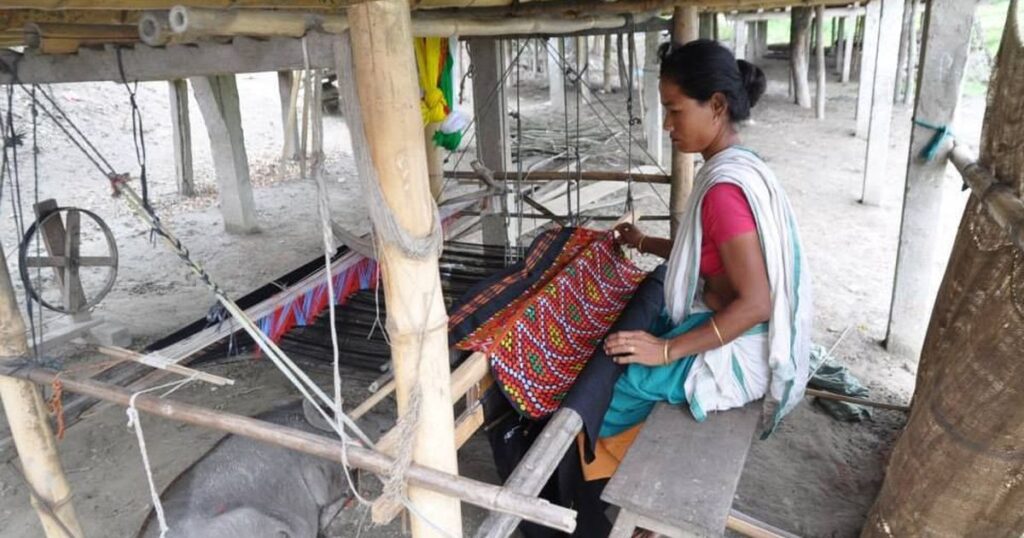
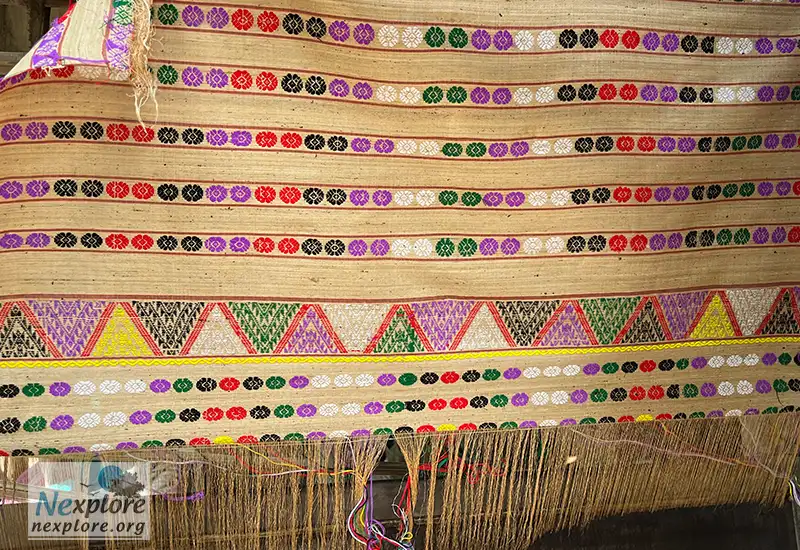
Discovering Silk Cocoon rearing in Dhemaji
From Majuli, I continued to Dhemaji, a lesser-known but beautiful region in Upper Assam. Here, I got a closer look at the silk cocoon-making process. Local women showed me how they rear silkworms on Som and Sualu trees for Muga silk and on castor leaves for Eri silk.
It was fascinating to see how the tiny cocoons are carefully collected, dried, and processed before the spinning begins. The meticulous care and effort that goes into every step made me truly appreciate the value of Assam’s silks. From rearing silkworms to spinning, dyeing, and weaving, each process takes immense patience and dedication. I realised that every piece of silk here is not just a fabric—it’s a labor of love, passed down through generations.
Best time to see the rearing of silkworm: March-April and September-October
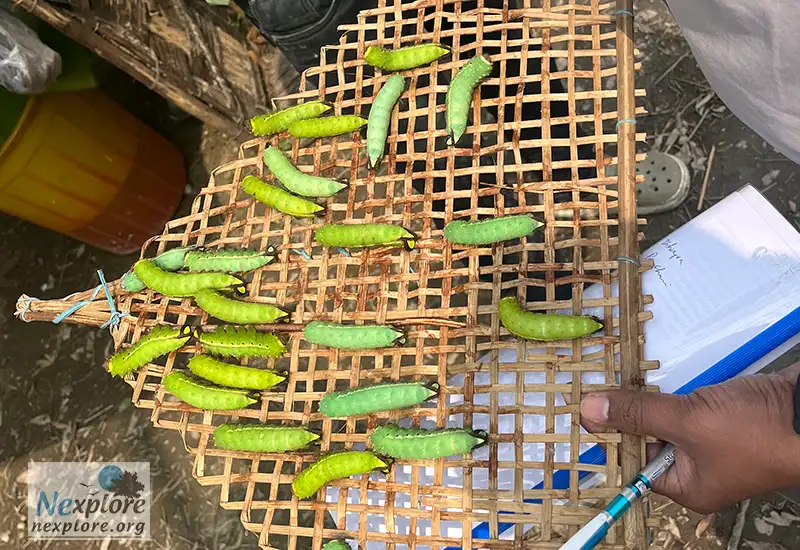
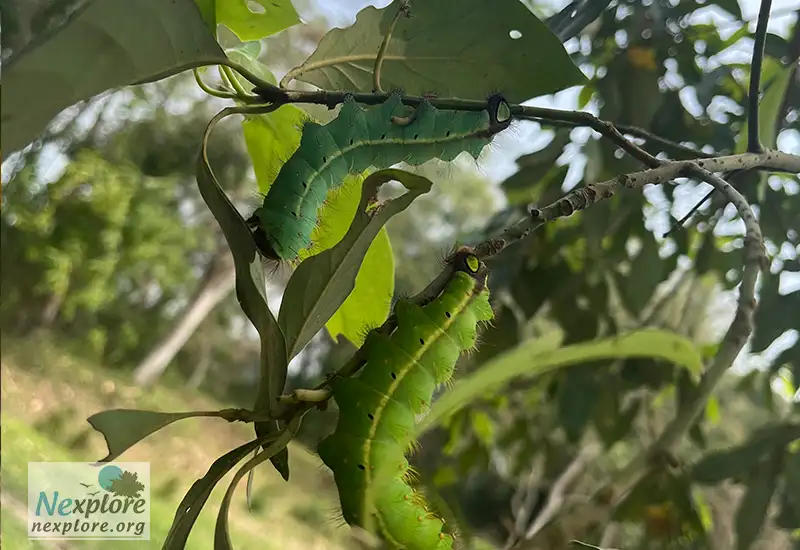
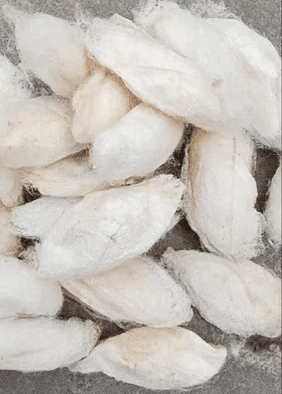
The silks of Assam — Muga, Eri, and Pat — are transformed into a stunning variety of fabrics that beautifully blend tradition with everyday utility. Muga silk fabrics, with their natural golden sheen, are used to craft elegant mekhela chadors, sarees, and traditional attire worn during weddings and festivals.
The Pat silk, known for its smooth texture and pure white glow, is often woven with intricate golden motifs to create graceful garments for special occasions. Meanwhile, Eri silk is widely used to make warm shawls, stoles, half jackets, and scarves, loved for their soft, cotton-like feel and eco-friendly nature. Today, these traditional silks are also being mixed with cotton and other natural fibers to design contemporary outfits, upholstery, and accessories — proving that Assam’s weaving heritage continues to evolve while keeping its cultural essence intact.
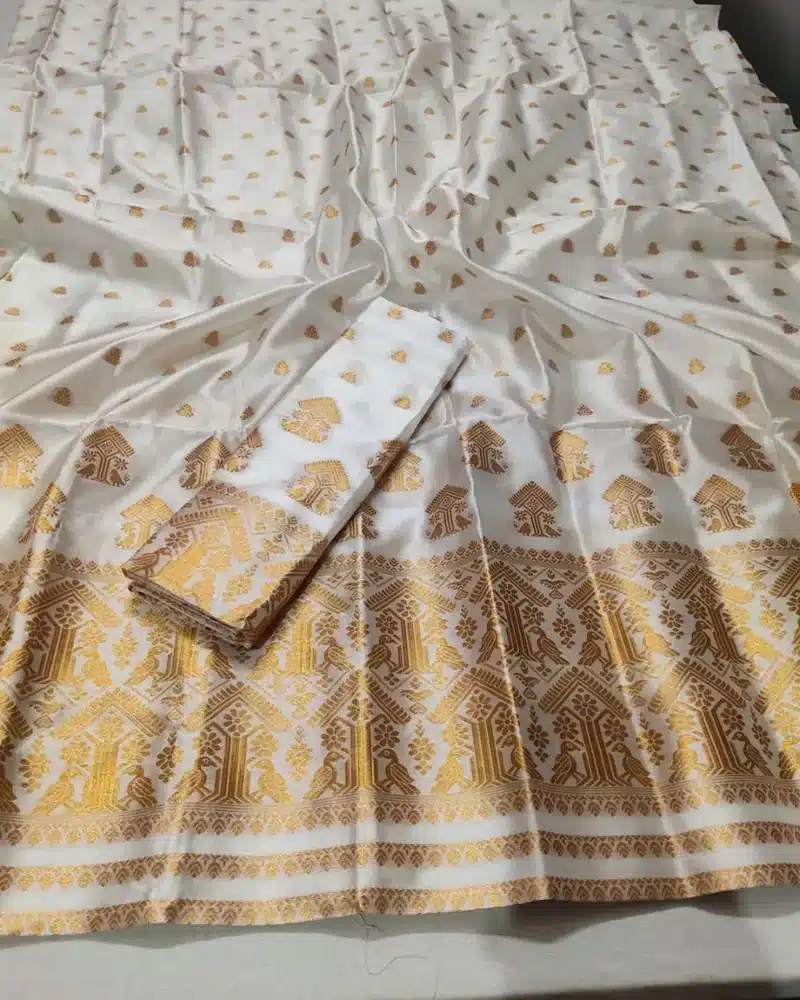
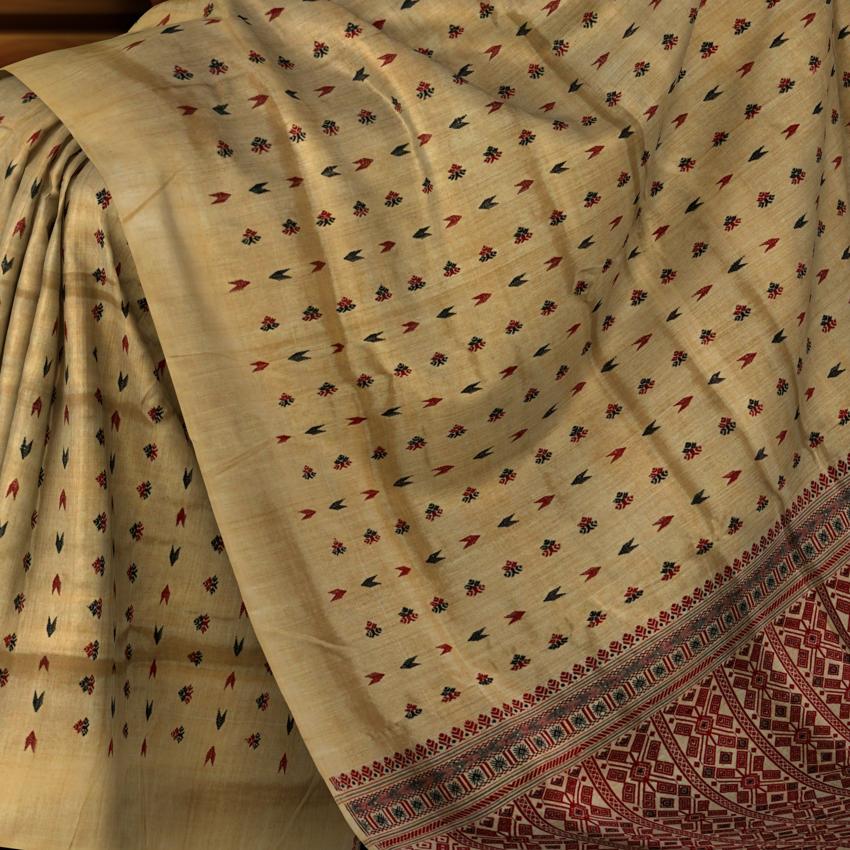
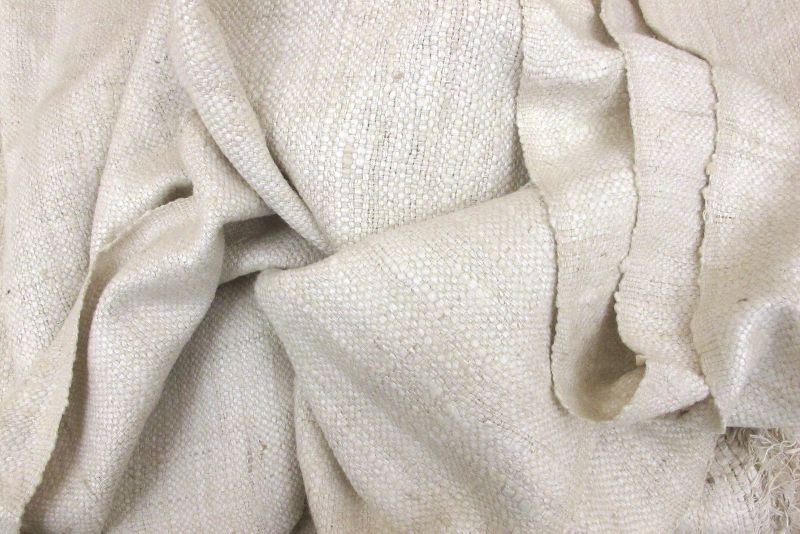
Eri Silk, often called Ahimsa Silk or Peace Silk, is one of Assam’s most unique and ethical fabrics. It is produced from the cocoon of the Eri silkworm (Samia cynthia ricini) after the moth naturally emerges, allowing the process to remain completely cruelty-free. Unlike other types of silk, Eri has a soft, cotton-like texture and a subtle matte finish, making it ideal for crafting warm, comfortable garments. In recent years, artisans have begun blending Eri silk with various cotton varieties to create beautifully textured fabrics that combine traditional craftsmanship with modern versatility.
These silks are not just garments; they are worn with pride during traditional functions and festivals like Bihu, weddings, and religious ceremonies. Each mekhela chador or gamosa symbolises respect, tradition, and the rich heritage of Assam.
Learning the Art of Natural Dyeing
As a bonus to my trip, I got a chance to join a special workshop conducted by local experts on natural dyeing techniques. We learned how to extract colours from natural sources, such as leaves and flowers, and how to incorporate natural patterns into clothes. Contact us to book your natural dying session when you are visiting Guwahati.
It was an amazing hands-on experience to see how a plain fabric can be transformed into vibrant shades using only eco-friendly methods. This session gave me a deeper understanding of how sustainability is deeply rooted in Assamese handloom practices.
Assam is also home to a variety of indigenous handwoven garments that showcase the state’s rich cultural heritage. The vibrant shawls of Karbi Anglong and Dima Hasao, adorned with bold tribal motifs, and the soft, durable Lasingphee blankets of Cachar, made from bamboo and cotton, stand as symbols of the region’s craftsmanship and identity.
Reflections on the Journey
As I concluded my textile journey through Assam, I couldn’t help but admire how the artistry of weaving connects the entire region of Northeast India. Assam’s silk heritage is just one chapter in a larger story of handloom excellence that extends across its neighbouring states.
In Nagaland, the traditional handlooms produce bold and geometric patterns, each design representing the identity and history of different tribes. The Ao, Angami, and Lotha weavers, for instance, create striking motifs that tell stories of courage, harvest, and community life. Meanwhile, in Manipur, the weavers are renowned for their fine cotton and silk textiles, especially the beautiful Phanek and Innaphi worn by Manipuri women. Their handwoven designs, often adorned with intricate patterns and soft colors, reflect both elegance and grace.
Venturing further to Arunachal Pradesh and Nagaland, I was fascinated by the colorful textile designs and the vibrant handcrafted jewellery worn by different tribes. Unlike the jewellery found in other parts of India, the ornaments here are made with natural materials and precious stones. These pieces are not just decorative—they carry cultural meaning, symbolizing status, heritage, and protection. Each necklace, bangle, or head ornament reflects the tribe’s unique identity and artistic expression.
What struck me most during this journey was the passion and craftsmanship that go into every thread and bead. The handloom traditions of Northeast India are living art forms, passed down through generations, yet facing modern challenges. Supporting local artisans—whether by purchasing authentic Sualkuchi silk, Manipuri handloom, or tribal jewellery—helps preserve these centuries-old traditions and allows them to thrive in a changing world.

The entire journey made me realise that these silks are not just fabrics but living traditions that bind the people of Assam together. Wearing a handwoven Assamese silk now feels like wearing a piece of art—a connection to the heart and soul of this land.
Handloom Tourism Assam
Assam is a land where every thread tells a story. The state’s rich tradition of handloom weaving is not just an art—it’s a way of life that connects generations. From the golden sheen of Muga silk to the soft warmth of Eri and the elegant charm of Pat, Assam’s handwoven fabrics reflect its deep cultural identity. Through handloom tourism in Assam, visitors can witness skilled artisans at work, explore traditional weaving villages, and experience the intricate process of transforming natural fibres into timeless fabrics—each piece carrying the essence of Assam’s heritage and creativity.
If you wish to experience this craftsmanship up close, contact us to book a customized handloom and textile tour package in Northeast India, and discover the region’s finest weaving traditions firsthand. You may also check our 6 days Assam Textile Tour package if you are planning to explore Assam and feel the spirit of handloom.
Related Read
Top 25 tourist attractions in Assam you don’t want to miss in your trip
Best Festivals in Northeast India You don’t want to miss
12 Traditional Dishes in Assam that will definitely win your heart


